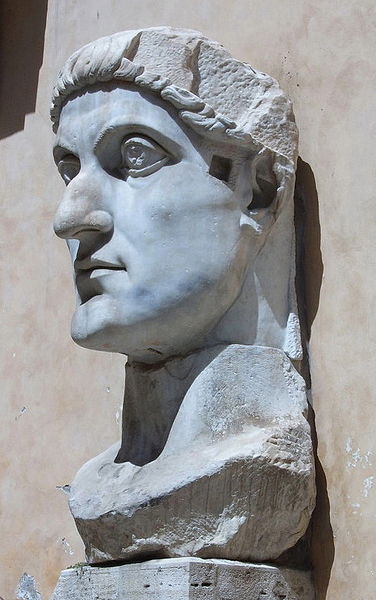March 14th holds a rich tapestry of historical milestones that have left lasting imprints on human history. From political decisions to technological breakthroughs, this day has witnessed pivotal events spanning centuries.
In this article, we explore 20 significant occurrences, offering insights into the complexities of human endeavors. Join us as we journey through time, uncovering the threads that connect March 14th to our collective past.
March 14th Events in History
44 BC – Casca and Cassius decide, on the night before the Assassination of Julius Caesar, that Mark Antony should stay alive
On the night before the Ides of March, Gaius Cassius Longinus and Marcus Junius Brutus, among others in the Roman Senate, finalized their plan to assassinate Julius Caesar.
Caesar, a military general and statesman, had played a critical role in the events that led to the demise of the Roman Republic and the rise of the Roman Empire.
Also Read: March 13 – On this Day in History
The conspirators believed that by killing Caesar, they could restore the traditional republican government. However, the assassination on March 15, 44 BC, led to a series of civil wars instead of restoring the republic, eventually culminating in the rise of the Roman Empire under Caesar’s adopted heir, Octavian (Augustus).

313 – Emperor Constantine I issues the Edict of Milan, granting religious freedom throughout the Roman Empire
The Edict of Milan was a proclamation that permanently established religious tolerance for Christianity within the Roman Empire.
It was the result of an agreement between Constantine I, who ruled the West, and Licinius, who ruled the East. Before the edict, Christians had been subject to persecution as a result of their refusal to worship the Roman gods and the Emperor.
Also Read: March 15th Events in History
The edict not only made Christianity legal but also returned confiscated church property. The Edict of Milan was a pivotal moment in Christian history, leading to its spread and eventual dominance in the Roman Empire and beyond.
1590 – The Battle of Ivry, during the French Wars of Religion, where Henry IV of France defeats the Catholic League, paving the way for Protestant control of France
The Battle of Ivry was fought on March 14, 1590, between the forces of Henry IV of France, a Protestant, and the Catholic League during the French Wars of Religion. Henry’s forces decisively defeated the Catholic League’s army, leading to his path to control over France.
The victory at Ivry showcased Henry IV’s military leadership and was a turning point in the wars of religion. It paved the way for the eventual issuance of the Edict of Nantes in 1598, which granted religious freedom to Protestants and helped restore peace to France.
1647 – Thirty Years’ War: Bavaria, Cologne, France, and Sweden sign the Truce of Ulm
The Truce of Ulm was a temporary cessation of hostilities in the Thirty Years’ War, which ravaged central Europe from 1618 to 1648. The truce was signed by various warring states, including Bavaria, Cologne, France, and Sweden.
Although not an end to the war, it represented a significant diplomatic effort to bring peace to a continent torn by religious and political conflicts.
The Thirty Years’ War eventually concluded with the Peace of Westphalia in 1648, which had profound impacts on the political and religious landscape of Europe, including the recognition of state sovereignty and the precedent for peace negotiations.
1794 – Eli Whitney is granted a patent for the cotton gin, an invention that revolutionized the cotton industry
On March 14, 1794, Eli Whitney received a patent for the cotton gin, a machine that revolutionized the cotton industry by efficiently separating cotton fibers from their seeds.
This invention greatly increased the efficiency of cotton processing, making cotton a lucrative crop in the Southern United States and profoundly affecting the economy and society.
Unfortunately, the cotton gin also had the unintended consequence of revitalizing the institution of slavery in the South, as the demand for cotton cultivation and processing labor increased dramatically. Whitney’s invention is often cited as a key factor in the economic causes of the American Civil War.

1883 – Karl Marx, German philosopher, economist, and political theorist, dies in London
Karl Marx, a German philosopher, economist, political theorist, and socialist revolutionary, died in London on March 14, 1883. Marx is best known for his critical analysis of capitalism and his advocacy for socialism and communism as alternatives.
Along with Friedrich Engels, he authored “The Communist Manifesto” in 1848, a pivotal work that argued for the class struggle between the bourgeoisie (capitalist class) and the proletariat (working class) and called for a revolution by the proletariat.
Marx’s ideas, later developed into Marxism, have had a profound influence on modern political thought and practice, inspiring numerous social, political, and economic reforms around the world, as well as revolutions in the 20th century.
1900 – The Gold Standard Act is ratified, placing United States currency on the gold standard
The Gold Standard Act was ratified by the United States Congress on March 14, 1900. This act established gold as the only standard for redeeming paper money, eliminating the bimetallic standard (which included silver) that had been used previously.
By setting a statutory value for gold, the Act aimed to stabilize the economy and currency by ensuring that the government could only issue currency equivalent to the amount of gold it held.
This move was crucial in the context of the late 19th-century debates over monetary policy, particularly the “Free Silver” movement, which advocated for the free coinage of silver to inflate the money supply and ease debts.
The Gold Standard Act solidified the United States’ commitment to sound money principles until the gold standard was fully abandoned during the Great Depression.
1903 – The Pelican Island National Wildlife Refuge is established by President Theodore Roosevelt, the first national wildlife refuge in the United States
President Theodore Roosevelt established the Pelican Island National Wildlife Refuge on March 14, 1903, marking the first designated wildlife refuge in the United States. Located in Florida, its creation was a landmark event in the environmental conservation movement, reflecting growing awareness and concern over the impacts of hunting and habitat destruction on bird populations.
Pelican Island was specifically established to protect egrets and other birds from being hunted for their feathers, which were highly valued in the fashion industry.
Roosevelt’s action began a legacy of conservation and the eventual establishment of the National Wildlife Refuge System, which now encompasses millions of acres across the United States dedicated to the preservation of natural habitats and wildlife.

1915 – World War I: The British navy sinks the German battleship SMS Dresden off the Chilean coast
During World War I, the German light cruiser SMS Dresden was sunk by British naval forces on March 14, 1915, off the Chilean coast. The Dresden was the last surviving German cruiser that had participated in the Battle of Coronel and the Battle of the Falkland Islands, significant early naval engagements in the war.
After eluding British forces for months in the South Atlantic and Pacific Oceans, the Dresden sought refuge in neutral Chilean waters near Robinson Crusoe Island.
Despite its neutral status, British forces attacked and sank the Dresden after negotiations failed, resulting in a diplomatic dispute with Chile. The sinking of the Dresden highlighted the global reach of the naval war and the challenges of maintaining neutrality during World War I.
1939 – Slovakia declares independence under German pressure
On March 14, 1939, Slovakia declared its independence from Czechoslovakia, a move that was heavily influenced by Nazi Germany.
This declaration came in the context of the Munich Agreement and the subsequent dismemberment of Czechoslovakia. Under the leadership of Jozef Tiso, Slovakia became a nominally independent state, but in reality, it was a puppet regime closely aligned with Nazi Germany.
Slovakia’s independence marked a significant moment in the lead-up to World War II, as it reflected the aggressive expansionist policies of Nazi Germany and the weakening of Central European countries. This event also foreshadowed the further disintegration of Czechoslovakia and the occupation of the Czech lands by Germany.
1951 – Korean War: For the second time, United Nations troops recapture Seoul
For the second time during the Korean War, United Nations forces, led predominantly by the United States, recaptured Seoul, the capital of South Korea, from North Korean and Chinese forces on March 14, 1951.
This event was part of a series of see-saw battles for control of the city following the North Korean invasion of South Korea in June 1950.
The recapture of Seoul was significant for several reasons: it was a major symbolic victory for UN forces, it demonstrated the effectiveness of international cooperation under the UN banner, and it underscored the intense urban combat and shifting front lines that characterized much of the Korean War.
The conflict eventually ended in 1953 with an armistice, leaving the Korean Peninsula divided at roughly the same boundary as before the war.
1964 – Jack Ruby is convicted of killing Lee Harvey Oswald, the alleged assassin of President John F. Kennedy
On March 14, 1964, Jack Ruby was convicted of murdering Lee Harvey Oswald, the accused assassin of President John F. Kennedy. Ruby, a nightclub owner in Dallas, Texas, shot Oswald on November 24, 1963, in the basement of the Dallas police headquarters, an act broadcast live on American television.
Ruby’s motive for killing Oswald has been the subject of much speculation and conspiracy theory. His trial brought to light Ruby’s claimed motive of wanting to spare the Kennedy family the agony of a lengthy trial.
Ruby’s conviction was later appealed, but he died of cancer in 1967 before his new trial could take place. The killing of Oswald by Ruby added a layer of complexity to the Kennedy assassination, fueling conspiracy theories that persist to this day.
1967 – The body of President John F. Kennedy is moved to a permanent burial place at Arlington National Cemetery
The body of President John F. Kennedy was moved to a permanent burial place at Arlington National Cemetery on March 14, 1967. Kennedy had been assassinated on November 22, 1963, in Dallas, Texas, and was initially buried in a temporary grave.
The reinterment involved moving the late president’s body to a more elaborate gravesite designed by architect John Carl Warnecke.
The site is marked by an eternal flame, which was lit by his widow, Jacqueline Kennedy, and remains a poignant symbol of Kennedy’s enduring legacy.
The gravesite has since become a place of national remembrance and pilgrimage, reflecting Kennedy’s significant impact on American history and the profound public mourning his assassination provoked.
1980 – In Poland, a plane crashes during an emergency landing near Warsaw, killing 87 people, including a 14-man American boxing team
On March 14, 1980, a plane carrying a 14-man American boxing team crashed during an emergency landing near Warsaw, Poland, killing all 87 people on board, including the athletes.
The team was en route to Poland for a training session and matches. The crash was one of the deadliest incidents involving sports teams and brought to light the risks associated with international sports travel.
The tragedy led to a period of mourning in the United States and Poland, highlighting the shared grief over the loss of young athletes and the fragility of life. It also prompted a review of safety procedures for sports teams traveling internationally.
1990 – The Soviet Union announces that Lithuania’s declaration of independence is invalid
On March 14, 1990, the Soviet Union declared Lithuania’s declaration of independence, which had been proclaimed just two days earlier, as invalid. Lithuania’s move towards independence marked the beginning of the end for the Soviet Union, sparking similar declarations from other Baltic states and eventually other republics within the USSR.
The Soviet response included economic blockades and threats of military force, highlighting the tensions between the central Soviet government and the nationalist movements within its republics. This period was marked by significant political and social upheaval, eventually leading to the dissolution of the Soviet Union in 1991.
Lithuania’s declaration of independence and the subsequent struggle for recognition played a critical role in the broader process of democratization and the end of Soviet influence in Eastern Europe.
1994 – Timeline of Linux development: Linux kernel version 1.0.0 is released
On March 14, 1994, the first official version of the Linux kernel, version 1.0.0, was released to the public. This marked a significant milestone in the development of the Linux operating system, which had begun as a personal project by Linus Torvalds in 1991.
The release of version 1.0.0 indicated that Linux had grown stable and feature-rich enough for wider use, paving the way for its adoption across various sectors, including servers, desktops, and later, mobile devices.
Linux’s open-source nature meant that it could be freely modified and distributed, fostering a vibrant community of developers and users. Over the years, Linux has become foundational to the internet, enterprise computing, and software development, underpinning systems from cloud infrastructure to Android smartphones.
1995 – Space Exploration: Astronaut Norman Thagard becomes the first American to ride to space on board a Russian launch vehicle
On March 14, 1995, Norman Thagard, an American astronaut, broke new ground in international space cooperation by becoming the first American to travel to space aboard a Russian Soyuz spacecraft.
Thagard’s mission, which involved traveling to the Mir space station, was part of a collaborative effort between the United States and Russia following the end of the Cold War.
This mission symbolized a significant thaw in U.S.-Russian relations and set the stage for further cooperation in space exploration, including the construction and operation of the International Space Station.
Thagard’s journey also highlighted the importance of international collaboration in advancing human presence in space and scientific research in orbit.
2004 – Vladimir Putin is elected President of Russia for the second time
On March 14, 2004, Vladimir Putin was re-elected as President of Russia, securing a second term in office. This election reaffirmed Putin’s hold on power, following his initial rise to the presidency in 2000.
Under Putin’s leadership, Russia experienced significant political and economic changes, with an emphasis on stabilizing the economy, centralizing power, and restoring Russia’s influence on the global stage. However, his tenure has also been marked by concerns over democratic backsliding, human rights issues, and the suppression of political dissent.
Putin’s re-election in 2004 was a pivotal moment in post-Soviet Russian history, signaling a continuation of policies aimed at strengthening state control and asserting Russia’s role as a major world power.
2011 – A reactor at the Fukushima Daiichi Nuclear Power Plant melts and explodes, releasing radioactive material
The disaster at the Fukushima Daiichi Nuclear Power Plant, which began on March 11, 2011, following a massive earthquake and tsunami, led to a significant development on March 14 when a reactor at the plant melted and exploded.
This event was one of the worst nuclear disasters in history, alongside Chernobyl, releasing significant amounts of radioactive material into the environment. The crisis raised serious questions about nuclear safety, emergency preparedness, and the environmental and health impacts of nuclear energy.
The disaster had far-reaching consequences, leading to a reevaluation of nuclear energy policies in Japan and worldwide, with several countries scaling back or rethinking their nuclear energy programs.
2018 – Stephen Hawking, the renowned British theoretical physicist and cosmologist, passes away at the age of 76
On March 14, 2018, the world lost one of its most brilliant minds when Stephen Hawking, the renowned British theoretical physicist and cosmologist, died at the age of 76. Hawking made groundbreaking contributions to our understanding of black holes, the nature of the universe, and the boundaries of theoretical physics.
Despite being diagnosed with a rare form of motor neuron disease at the age of 22 and given just a few years to live, Hawking’s resilience and dedication to science saw him defy the odds, becoming an iconic figure in modern physics and a best-selling author.
His work on the nature of space and time, popularized in his book “A Brief History of Time,” has inspired generations of scientists and laypeople alike, leaving a lasting legacy on both science and popular culture.
